[Lightning-fast Top Performance]: Fikwot FX991 M.2 SSD 1TB adopts NVMe protocol and PCIe Gen 4x4 specifications, and the maximum read and write speed can easily reach 7100MB/s and 6100MB/s. With lightning-fast speeds, the FX991 NVMe SSD can make your computer's systems and applications respond quickly, improving work efficiency.
[Excellent Thermal Management]: FX991 NVMe SSD 1TB is equipped with Auto-adaptive temperature adjustment and power efficiency management. It can intelligently adjust the NVMe SSD heating temperature and power consumption control, which can reduces the burden on the device and extends the battery life of laptops and other devices. We have equipped M2 SSD 1TB with high-conductivity graphite heatsink. Under high load conditions, the internal ssd reading speed can still be close to the peak.
[HMB and SLC Cache]: With HMB and smart SLC cache, FX991 M.2 NVMe SSD can deliver outstanding performance. Host Memory Buffer (HMB) technology enables NVMe SSD to use the DRAM of the host system for read and write caching and buffering, significantly improving the speed of computer startup, multitasking, and game resource transfer and reading. At the same time, FX991 M.2 SSD also supports TRIM, S.M.A.R.T, AES-256 encryption and other technologies.
[Excellent Compatibility]: Whether it is a laptop, desktop computer or game console such as PS5, FX991 1TB SSD M.2 is perfectly compatible to meet your storage needs on various devices. FX991 1TB NVMe SSD can be used as a PS5 storage expansion, and you can easily upgrade your gaming experience with it.
[5-Year Service]: We are confident in the quality of our products, so we provide a limited service of up to 5 years or 600TBW for the FX991 M.2 1TB SSD, so that you can enjoy excellent performance and reliability with confidence. Choose the top-performance FX991 M.2 2280 internal solid state drives to make your computing experience smoother and more efficient!
https://www.amazon.com/gp/product...OAEKG&th=1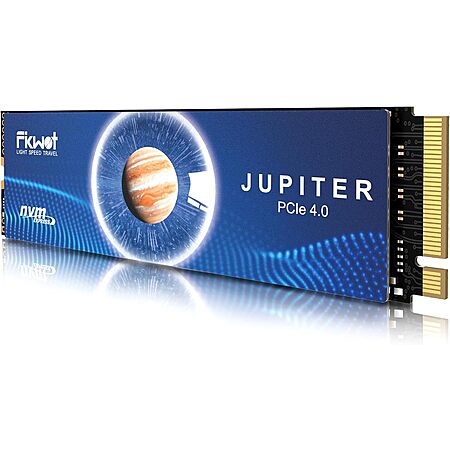
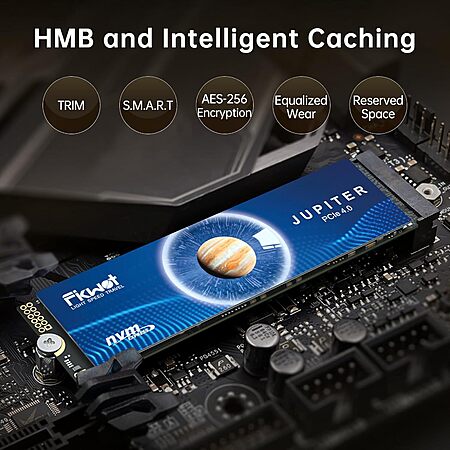
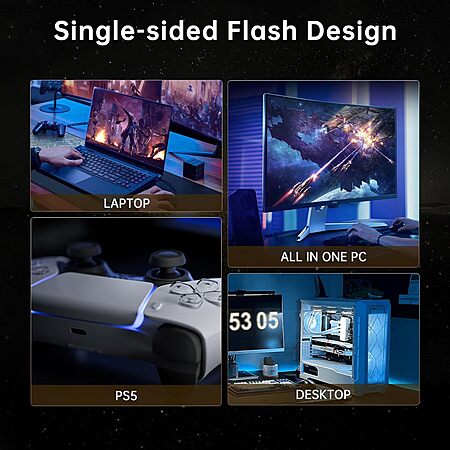
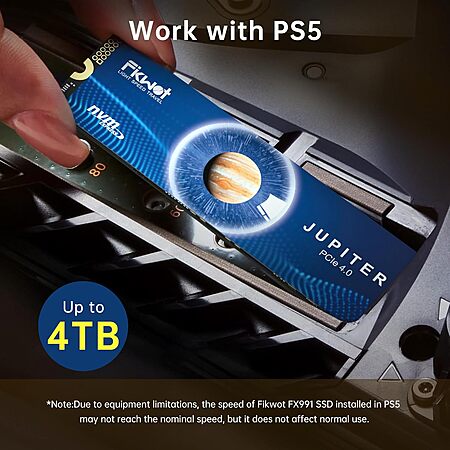
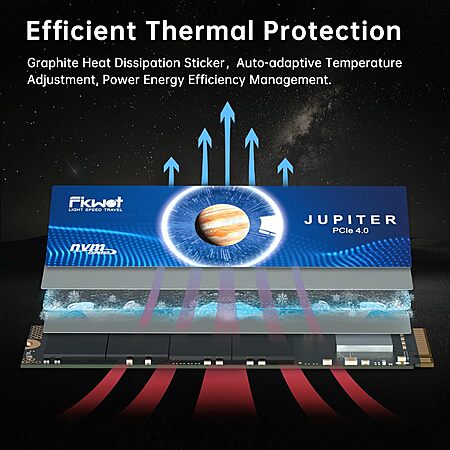





Leave a Comment
9 Comments
Sign up for a Slickdeals account to remove this ad.
So at $10 difference all in, most will opt for the Samsung or WD (the 990 plus looks pretty comparable on specs). But if someone needs multiple, is willing to do some searching to find out what chips this brand uses... could be worth it.
NAND and Controller Details
The Fikwot FX991 M.2 SSD 1TB NVMe (M.2 2280 form factor) is built using the following key components:
• NAND Flash: 3D QLC NAND, specifically from YMTC (Yangtze Memory Technologies Co.), a Chinese semiconductor company known for producing advanced 3D NAND flash
Perplexity is all knowing
https://www.perplexity.
PCIe Gen 4 vs PCIe Gen 5: Speed Comparison
Raw Speed and Bandwidth
• PCIe Gen 4.0:
• Maximum data rate: 16 GT/s (gigatransfers per second) per lane
• Bandwidth: Approximately 2 GB/s per lane
• x16 slot bandwidth: Up to 32 GB/s (unidirectional), or 64 GB/s (bidirectional).
• PCIe Gen 5.0:
• Maximum data rate: 32 GT/s per lane (double Gen 4)
• Bandwidth: Approximately 4 GB/s per lane
• x16 slot bandwidth: Up to 64 GB/s (unidirectional), or 128 GB/s (bidirectional).
Real-World Performance Impact
• For SSDs, PCIe Gen 5.0 NVMe drives can be up to 2x faster than Gen 4.0 models, with theoretical read speeds up to 16 GB/s (x4 lanes) compared to 8 GB/s for Gen 4.0.
• For GPUs, the difference between Gen 4.0 and Gen 5.0 is currently minimal in most consumer workloads. Benchmarks with high-end graphics cards like the RTX 5090 show only a 1–4% difference between Gen 4 and Gen 5 x16 slots, with both offering similar real-world performance in gaming and most applications.
• The main benefit of PCIe Gen 5.0 today is future-proofing and supporting devices that require extremely high bandwidth, such as next-generation SSDs, high-speed networking, and data center applications.
Summary
• PCIe Gen 5.0 offers double the bandwidth of Gen 4.0: 32 GT/s vs. 16 GT/s per lane, or ~4 GB/s vs. ~2 GB/s per lane.
• Real-world gains for most users (especially gamers) are minimal right now, but PCIe Gen 5.0 is valuable for high-performance SSDs and enterprise/data center workloads.
• Upgrading to Gen 5.0 may require new motherboards and CPUs to fully utilize the higher speeds.
In summary, PCIe Gen 5.0 is twice as fast as Gen 4.0 in terms of raw bandwidth, but the practical performance difference is currently most noticeable with ultra-fast storage and specialized professional workloads
Sign up for a Slickdeals account to remove this ad.
PCIe Gen 4 vs PCIe Gen 5: Speed Comparison
Raw Speed and Bandwidth
• PCIe Gen 4.0:
• Maximum data rate: 16 GT/s (gigatransfers per second) per lane
• Bandwidth: Approximately 2 GB/s per lane
• x16 slot bandwidth: Up to 32 GB/s (unidirectional), or 64 GB/s (bidirectional).
• PCIe Gen 5.0:
• Maximum data rate: 32 GT/s per lane (double Gen 4)
• Bandwidth: Approximately 4 GB/s per lane
• x16 slot bandwidth: Up to 64 GB/s (unidirectional), or 128 GB/s (bidirectional).
Real-World Performance Impact
• For SSDs, PCIe Gen 5.0 NVMe drives can be up to 2x faster than Gen 4.0 models, with theoretical read speeds up to 16 GB/s (x4 lanes) compared to 8 GB/s for Gen 4.0.
• For GPUs, the difference between Gen 4.0 and Gen 5.0 is currently minimal in most consumer workloads. Benchmarks with high-end graphics cards like the RTX 5090 show only a 1–4% difference between Gen 4 and Gen 5 x16 slots, with both offering similar real-world performance in gaming and most applications.
• The main benefit of PCIe Gen 5.0 today is future-proofing and supporting devices that require extremely high bandwidth, such as next-generation SSDs, high-speed networking, and data center applications.
Summary
• PCIe Gen 5.0 offers double the bandwidth of Gen 4.0: 32 GT/s vs. 16 GT/s per lane, or ~4 GB/s vs. ~2 GB/s per lane.
• Real-world gains for most users (especially gamers) are minimal right now, but PCIe Gen 5.0 is valuable for high-performance SSDs and enterprise/data center workloads.
• Upgrading to Gen 5.0 may require new motherboards and CPUs to fully utilize the higher speeds.
In summary, PCIe Gen 5.0 is twice as fast as Gen 4.0 in terms of raw bandwidth, but the practical performance difference is currently most noticeable with ultra-fast storage and specialized professional workloads
Supposedly they've been around since 2018 yet I've never heard of them.
Leave a Comment